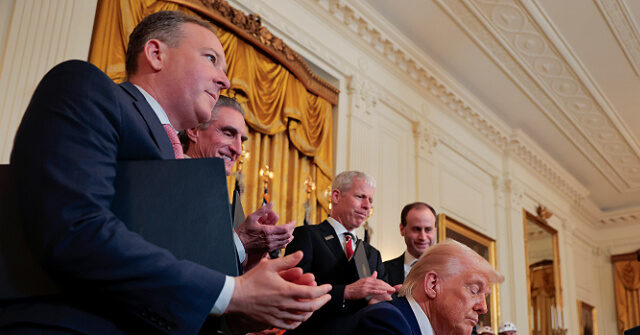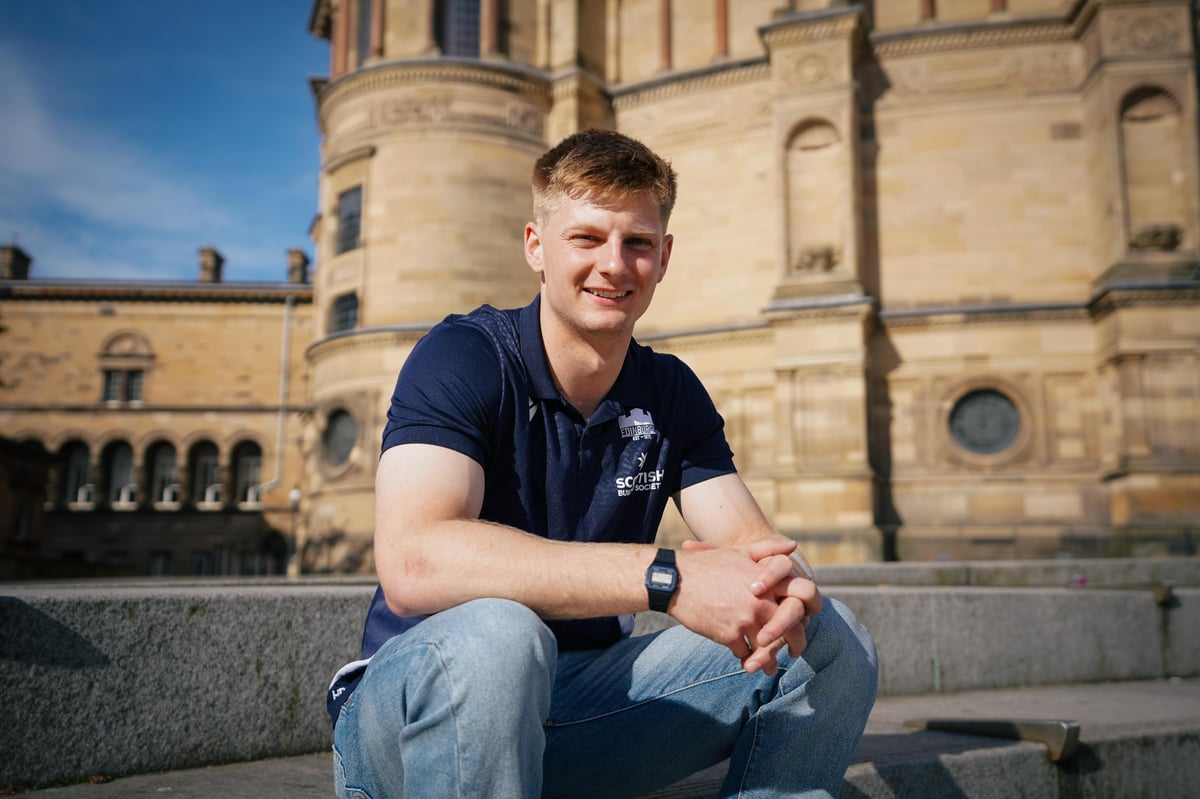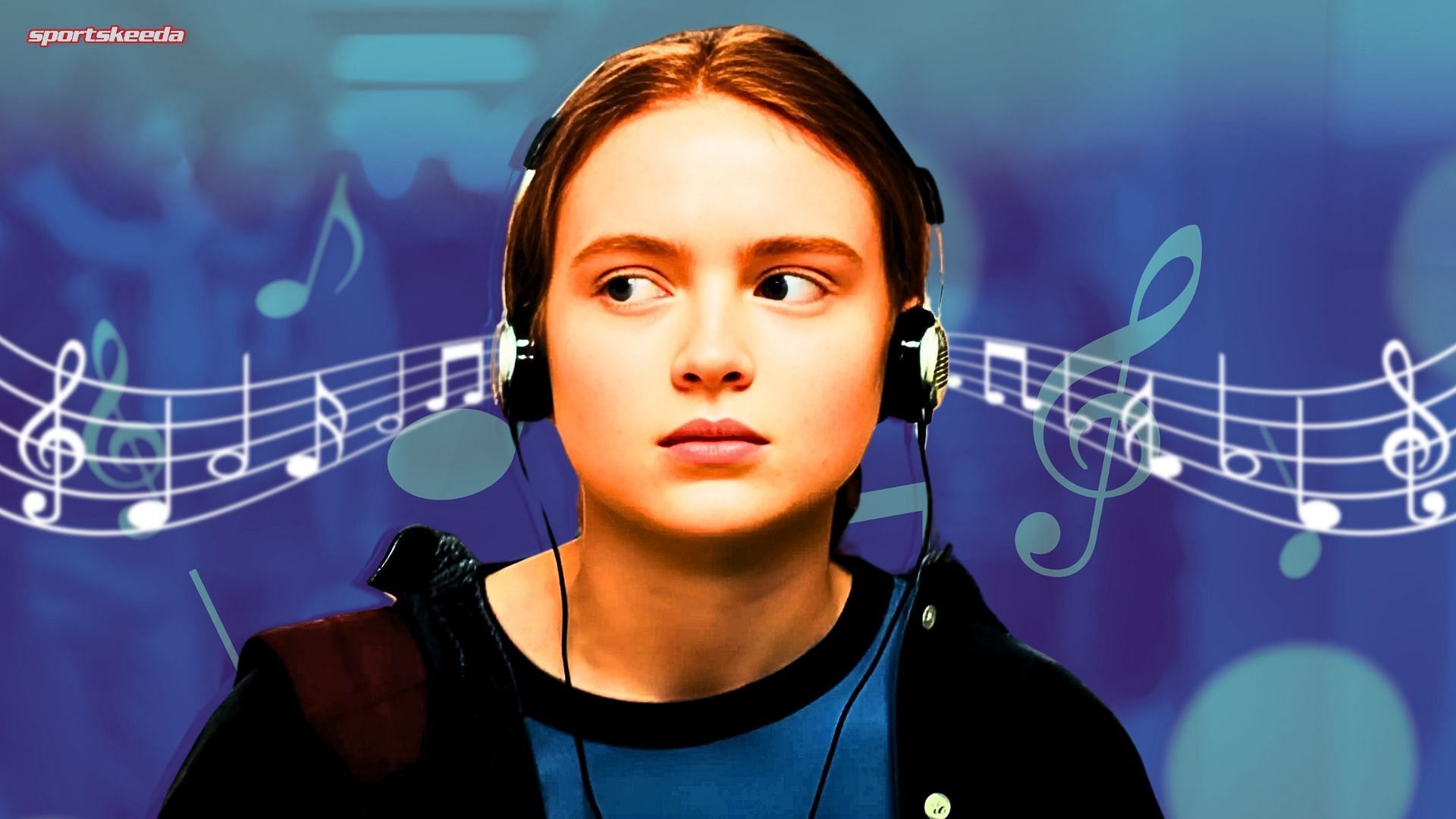From chalkboards to chatbots: The promise of AI-powered learning in African classrooms

The morning sun poured through the cracked windows of St. Mary’s Primary School in the Upper East Region of Ghana, casting golden streaks across the worn concrete floor. The wooden desks, chipped and weathered by years of use, were neatly arranged in rows. In one corner of the room, a single solar-powered charging station buzzed softly, feeding life into a set of modest tablets that had become the school’s most prized possessions. Today’s English lesson was unlike anything these students’ older siblings had ever known. Instead of rote memorisation and chorused repetition, each child tapped open an AI-powered learning app tailored to their personal reading level. The system, developed through a partnership between local innovators and the AiAfrica Project, welcomed them with gentle greetings in both English and Dagbani, adjusting automatically to their preferred language for instructions. As ten-year-old Amina struggled with phonics, her screen offered her extra practice exercises and video clips breaking down sounds into bite-sized, understandable pieces. Meanwhile, her classmate, Joseph, who was breezing through comprehension tasks, was seamlessly moved into more advanced storytelling activities — all without the teacher having to intervene or slow down the entire class. At the front of the room, Madam Efua, the sole teacher for the fifty-five students, moved calmly between desks. Her role today was less about delivering identical lessons and more about encouraging, coaching, and noticing who needed a kind word, a hint, or a celebration of a new milestone reached. She no longer carried the overwhelming burden of trying to simultaneously teach students at wildly different levels of ability; the AI software acted as her silent assistant, customizing support for each child with a precision no human could sustain across so many learners at once. "The first time we used the AI tablets, I was afraid," Madam Efua admitted later with a chuckle. "I thought it would replace me. But now I see—it helps me be a better teacher. It gives me more time to really know my students." For the students, the excitement was palpable. "When the tablet tells me ‘Good Job!’ I feel proud," beamed Amina, hugging the device to her chest. "I want to read more books now." Joseph chimed in, "I like that it shows me things I don't know yet. I feel smart, like I can do anything." Outside the classroom, goats ambled lazily along the dusty road and women drew water from a communal well. Life remained modest, even harsh, for many in the community. Yet inside that sunlit classroom, with the hum of a single solar panel and a handful of AI-driven devices, a quiet revolution was unfolding — one that held the potential to rewrite the destinies of entire villages, and indeed, an entire continent. This small miracle at St. Mary’s is not an isolated story. Across Africa, from Kenya’s bustling Nairobi slums to remote hamlets in Nigeria’s Edo State, AI-powered learning solutions are starting to make their way into classrooms once left behind by the digital revolution. They are bridging divides that once seemed insurmountable: gaps between rural and urban, between privileged and poor, between boys and girls. The promise shimmering in that rural Ghanaian classroom is simple yet profound: that with the thoughtful integration of AI, Africa’s classrooms can leap beyond chalkboards and crumbling textbooks into a future where every child, regardless of geography or circumstance, learns at their own pace, with dignity, support, and boundless possibility. This is not science fiction. It is happening now. The only question is whether African governments, educators, donors, and technology partners will have the courage and vision to scale these solutions to reach every child. 1. Why Africa Needs AI-Enhanced Learning Now Africa stands on the precipice of a demographic tidal wave unlike any the world has ever seen. In 2050, it is projected that Africa will be home to nearly one-third of the world’s youth population, with more than 200 million young people already under the age of 25 today (United Nations, 2022). This "youth bulge" represents a tremendous potential asset — a workforce, a generation of innovators, a cultural dynamo. But it is also a ticking clock: unless African education systems transform radically and quickly, millions of young people risk being left behind, trapped in cycles of underemployment, disenfranchisement, and economic exclusion. The current reality is sobering. According to UNESCO’s Global Education Monitoring Report (2022), more than 90% of children in sub-Saharan Africa are not achieving minimum proficiency levels in reading and mathematics by the end of primary school. The World Bank (2022) labels this situation as a “learning crisis” — one exacerbated, not alleviated, by mere school attendance. In many classrooms, children sit through lessons year after year without mastering basic skills, resulting in what researchers’ term "learning poverty." Even among those who stay in school, traditional methods — rigid rote memorisation, overcrowded classrooms, under-resourced teachers — fail to nurture the critical thinking, problem-solving, and digital competencies needed for the 21st-century economy. Against this stark backdrop, the urgency to innovate has never been greater. Traditional education reform cycles, often sluggish and bureaucratic, cannot move fast enough to meet the scale of the challenge. It is here that artificial intelligence offers a bold new path. In personalising learning, adapting in real time to students’ individual needs, and supporting overstretched teachers, AI technologies have the potential to compress decades of educational catch-up into a matter of years. AI is not a silver bullet. It cannot, and should not, replace teachers or community-driven learning values. But deployed thoughtfully, AI can help address the very structural issues — inequity, inflexibility, inefficiency — that have long plagued African education systems. As UNESCO’s Artificial Intelligence in Education report (2021) argues, AI, when aligned with strong pedagogy and ethical safeguards, can act as an accelerant for achieving inclusive and equitable quality education, one of the Sustainable Development Goals most at risk in Africa today. Importantly, Africa does not need to wait for futuristic, expensive innovations. Tools already exist — mobile-friendly AI tutors, SMS-based learning platforms, lightweight classroom management systems — that can function even in low-bandwidth, low-resource environments. Projects such as Kenya’s M-Shule, which delivers personalised AI-powered learning via basic feature phones, show that even the most marginalised communities can benefit from AI-enhanced education today, not decades from now. The window of opportunity is narrow but powerful. If Africa can integrate AI-assisted learning now, it can leapfrog legacy systems that still entangle much of the developed world and craft education systems built for the realities of a digital, interconnected global economy. The question is not whether Africa can afford to invest in AI for education. It is whether Africa can afford not to. At a moment when global competition is intensifying and technological skills define national fortunes, standing still is the same as falling behind. Africa’s youth deserve better. They deserve classrooms where their talents are nurtured, their pace respected, their aspirations lifted, not crushed by outdated models. And AI, wielded wisely and inclusively, can be a bridge from today's crisis to tomorrow's promise. 2. Proof It Works – Evidence from Nigeria, Rwanda, and Beyond In the heart of Edo State, Nigeria, a quiet educational revolution has been unfolding, and the results are nothing short of transformative. In 2023, the World Bank, in partnership with the Edo State government and a consortium of education technology innovators, piloted an artificial intelligence (AI) tutoring project in public primary schools. The goal was audacious: to see if AI-powered, personalised learning platforms could bridge Nigeria’s entrenched literacy and numeracy gaps faster and more effectively than traditional methods. The pilot introduced AI tutors — lightweight applications running on basic tablets — into classrooms where teacher-to-student ratios were often more than 1:50. The AI adapted lessons to each child’s unique learning needs, offering real-time feedback, customised exercises, and motivational nudges. Teachers, far from being sidelined, were trained to use the AI as a co-teaching assistant, enabling them to focus on mentoring and individualised support rather than monotonous lecturing. The results stunned even seasoned education experts. According to the World Bank’s evaluation report (World Bank, 2024), students who used the AI tutors for just eight months scored twice as high in reading comprehension and mathematics tests compared to peers in control schools using traditional methods. Girls, in particular, made dramatic gains, significantly narrowing the gender achievement gap that has long plagued education in parts of Nigeria. Teachers reported feeling newly empowered, no longer overwhelmed by the impossible task of teaching students with vastly different skill levels simultaneously. "The AI tutor became my helper," explained Mrs. Ehimare, a third-grade teacher in Benin City. "It knew when a child needed more practice and when they were ready to move ahead. It gave me time to talk to students, encourage them, and build their confidence. Before, it felt like shouting into the wind. Now, I feel like a real teacher again." Nigeria’s experience is not isolated. Across the continent, other innovative AI-assisted education pilots have begun to yield promising results. In Rwanda, the government has embarked on an ambitious initiative to integrate AI into its education system, aiming to transform the country into a high-income, knowledge-based economy. This forward-thinking strategy includes deploying AI-powered learning tools that personalise education, adapting content to individual learners’ pace and understanding. Such personalised approaches have been shown to increase engagement and retention, making AI education more effective (Human Security World, 2024). Furthermore, a study by Butera and Kanyamihigo (2024) explored the implementation and impact of personalised learning through AI in Rwandan higher education. The findings revealed that AI-assisted personalised learning significantly enhanced student engagement and motivation by aligning learning experiences with individual needs and interests, leading to improved academic outcomes. However, challenges such as limited technological infrastructure and insufficient training were noted, highlighting the need for investment in technology and comprehensive training programs for educators. Meanwhile, in Kenya, the M-Shule platform has revolutionised learning access in some of the country’s most underserved communities. M-Shule delivers AI-personalised educational content via basic SMS messages, requiring only the simplest mobile phones, not expensive tablets or laptops. Students receive daily quizzes, feedback, and encouragement tailored to their progress levels. In a 2022 evaluation study, learners using M-Shule showed an average 24% improvement in literacy scores after just six months (M-Shule Impact Report, 2022). Moreover, parents who had previously felt excluded from their children's education reported feeling more connected and involved, receiving regular SMS updates on their child's learning journey. These case studies reveal a powerful truth: AI is not just a theoretical tool for high-tech laboratories and elite schools. With thoughtful design and contextual adaptation, AI can thrive even in resource-constrained environments, dramatically improving learning outcomes for millions of African children who have been left behind by traditional systems. Moreover, the benefits extend beyond test scores. AI-assisted learning platforms foster greater student agency, helping children set their own learning goals, track their progress, and develop resilience when facing challenges. They allow teachers to rediscover the relational, mentoring heart of their profession. And they empower parents — even those with limited formal education themselves — to become active participants in their children’s academic growth. Africa’s experiments with AI tutoring are not just working. They are lighting a path toward a more inclusive, empowering, and effective educational future. The challenge now is scaling these pockets of innovation into national strategies, ensuring that what works for a few thousand children today becomes a right for millions tomorrow 3. How AI Transforms the Classroom Experience Walk into a classroom piloting AI-powered learning in Africa today, and the atmosphere feels different — lighter, more alive, more centred on the learner than on the chalkboard. No longer is the teacher’s voice the sole source of knowledge while students passively copy notes into worn exercise books. Instead, learning becomes dynamic, tailored, and empowering. AI does not simply automate old ways of teaching; it reimagines what education can be. The changes ripple through four key dimensions of the classroom experience. 3.1 Personalised Pacing In traditional classrooms across Africa, teaching is often synchronized to the "average" student — a mythical learner who neither struggles too much nor advances too quickly. Those who fall behind get left further and further adrift; those ready for more challenge grow bored and disengaged. AI breaks this rigidity. It recognises that every learner is unique. In the pilot classrooms of Edo State, Nigeria, and in rural schools using Ghana’s Coral Reef AI platform, students no longer had to march lockstep through fixed lesson plans. Instead, the AI assessed each child's progress in real time, offering slower repetition where needed and faster advancement where mastery was demonstrated. Amina, the 10-year-old in Ghana who once dreaded English lessons because she lagged behind her classmates, now learns at her own rhythm. Joseph, who speeds through exercises, is no longer held back waiting for others. In personalised AI environments, each child feels seen, respected, and supported. Personalised pacing does more than improve academic outcomes; it restores dignity to learning. It acknowledges that intelligence is not uniform and that all children, given the right scaffold, can achieve success. 3.2 AI as a Super-Tutor Teachers have always dreamed of being able to sit beside every child individually, patiently explaining a tricky concept multiple times without fatigue or frustration. In classrooms with 40, 50, or even 100 students, this dream is impossible, until now. AI acts as a super-tutor, providing immediate feedback and infinite patience. If a student misunderstands a math problem, the AI does not scold or move on; it rephrases the explanation, offers another hint, or guides the student through a simpler version of the task. In Edo State, students who interacted with AI tutors reported feeling more comfortable asking questions — even "silly" ones — because the AI never showed annoyance or favouritism. As one young boy put it, "The tablet never gets tired of me." This transformation lowers the psychological barriers that often inhibit learning, especially for girls and marginalised students who may feel intimidated in traditional classrooms. 3.3 Teachers Freed to Focus on Mentorship Rather than replacing teachers, AI rehumanizes their role. Freed from the tyranny of endless rote instruction and administrative overload, teachers can focus on what they do best: mentoring, motivating, and nurturing the whole child. Madam Efua in Ghana describes how, with AI handling the heavy lifting of content delivery and differentiated practice, she spends more time encouraging struggling students, celebrating small victories, and cultivating a classroom culture of curiosity and resilience. "Before, I was just trying to survive the day," she says. "Now, I am building relationships. I am inspiring dreams." AI also provides teachers with real-time dashboards showing which students are excelling, which are struggling, and what specific misconceptions need to be addressed. This data-driven insight empowers teachers to intervene earlier, more effectively, and more empathetically. 3.4 Greater Inclusion Perhaps one of AI's most profound promises is its ability to foster greater inclusion in African classrooms. AI systems can adapt lessons for students with disabilities, offering audio narrations for the visually impaired, visual supports for students with hearing difficulties, and simplified texts for learners with cognitive challenges. In Rwanda, early-stage AI projects in secondary schools have piloted adaptive platforms that adjust content based on students’ language proficiency levels, ensuring that those still mastering English or French are not left behind. Similarly, M-Shule’s SMS-based AI tutor in Kenya adapts to students’ language choices and literacy levels, allowing children from marginalised rural areas to learn in a way that respects their realities. In a continent as diverse and multilingual as Africa, this flexibility is not a luxury — it is a necessity for achieving education for all. 4. Caution and Care – Challenges of AI in Schools The promise of AI-powered education in Africa is immense, but so too are the perils if implementation is rushed, inequitable, or poorly governed. In the same way that fire can warm a home or burn it to the ground, AI’s transformative power must be handled with wisdom, caution, and unwavering attention to context and ethics. Across the growing number of AI education pilots in Africa, four major challenges consistently emerge, each demanding serious reflection and proactive solutions. 4.1 Bias Risks AI systems are only as good as the data and design choices that shape them. If training datasets lack representation from African contexts — rural dialects, cultural nuances, gender dynamics — then AI-driven learning tools risk reinforcing the very inequalities they aim to address. In early deployments, some AI learning applications struggled to recognise the speech patterns of children speaking accented English, leading to mis-scoring and learner frustration. Moreover, without deliberate safeguards, AI algorithms can mirror biases related to gender, disability, and socioeconomic status. A World Bank internal review (World Bank, 2024) warned that if unchecked, AI tutors could recommend easier content disproportionately to girls or disadvantaged students based on unconscious bias embedded in their programming. Bias in AI is not an abstract academic issue; it can tangibly widen learning gaps and entrench exclusion. African governments, developers, and funders must insist on rigorous bias testing, inclusive data practices, and continuous algorithmic audits before scaling AI solutions continent-wide. 4.2 Infrastructure Gaps While AI can run on remarkably simple devices, it still depends on a basic layer of infrastructure: electricity, mobile networks, and affordable devices. In vast swathes of rural Africa, these foundations remain fragile or absent. According to the International Telecommunication Union (ITU, 2023), only 36% of rural households in Sub-Saharan Africa have access to electricity, and even fewer have consistent internet coverage. In some pilot sites, like rural Edo State and northern Kenya, solar-powered chargers and offline AI apps have provided partial workarounds. But the reality remains that without massive investment in rural electrification, mobile expansion, and affordable device ecosystems, AI-enhanced education will remain confined to pockets of privilege. Infrastructure development must go hand-in-hand with AI education strategies; otherwise, the technology risks becoming another vector for deepening the urban-rural digital divide. 4.3 Need for Human Oversight AI is a powerful learning tool, but it cannot — and must not — replace human educators. Without skilled teachers guiding, contextualising, and moderating AI usage, there is a real risk of "automated education" that feels impersonal, rigid, or even alienating. Teachers are critical for ensuring that AI-generated feedback is interpreted correctly, that students stay motivated, and that ethical concerns, such as content appropriateness, are vigilantly managed. In Rwanda’s AI pilots, for instance, teachers reported needing to intervene when students misunderstood AI-generated feedback or became over-reliant on automated hints rather than developing independent critical thinking (Butera & Kanyamihigo, 2024). Building strong teacher capacity is not optional; it is foundational. Teachers must be trained not just as users of AI, but as ethical stewards, digital mentors, and creative partners in AI-enhanced learning environments. 4.4 Data Privacy and Child Protection Issues In the rush to harness AI’s power, one of the gravest dangers is the mishandling of children's personal data. AI learning systems inevitably collect sensitive information — academic performance, behavioural patterns, sometimes even voice recordings. Without strong data protection laws and enforcement mechanisms, children’s privacy could be compromised, their data sold, misused, or exposed to cyber threats. In Africa, where only a handful of countries have robust child-specific data protection frameworks, this risk is acute. Recent UNESCO guidance (UNESCO, 2022) warns that AI systems in education must be designed with "privacy by default" principles, ensuring minimal data collection, strong encryption, parental consent mechanisms, and clear rights to data deletion. If African countries are serious about embracing AI in education, they must be equally serious about embedding world-class child data protection norms into every deployment, from the earliest pilot to the largest national rollout. 5. Scaling the Promise – Lessons and Solutions If Africa is to realise the full potential of AI-powered learning, it must move beyond scattered pilots and project-by-project experiments toward systemic, inclusive, and ethical scaling. The experiences in Nigeria, Rwanda, Kenya, and Ghana show that it can be done — but they also illuminate the roadmap for how to do it right. Scaling AI-enhanced education across the continent requires careful balancing: harnessing innovation without abandoning the human touch, driving speed without sacrificing equity, and maintaining ambition without overlooking local context. 5.1 Embed AI in National Education Policies AI must not remain an optional experiment for a few innovative schools. It must be anchored in national education strategies and budgets, treated as a core pillar of future-readiness. Ministries of Education across Africa must urgently revise curriculum frameworks to incorporate AI literacy, not just for learners but also for teachers and administrators. National policies must outline standards for AI use in schools, set equity goals to avoid exacerbating disparities, and define measurable targets for AI integration. Governments should build on continental strategies such as the African Union’s Digital Transformation Strategy for Africa 2020–2030 and align AI education initiatives with the broader Sustainable Development Goals. When Rwanda embedded AI literacy into its Smart Education Master Plan, it provided a clear signal to partners, funders, and schools that AI was not a luxury—it was a necessity. Every African country now needs to send that same unmistakable signal. 5.2 Prioritise Teacher Training Alongside Student Access Scaling AI education is not just about distributing devices or installing apps. Teachers are the critical success factor. Every investment in AI learning tools must be matched with an investment in teacher professional development. Training must go beyond technical instruction; it must build teachers’ confidence to use AI tools creatively, ethically, and adaptively. Teachers must learn how to interpret AI-driven data insights, how to balance AI support with human mentorship, and how to detect and address bias or ethical concerns. Programs like the AiAfrica Project are already offering teacher upskilling modules tailored for African contexts, blending online learning, in-person workshops, and peer coaching models. Scaling these programs rapidly and affordably across all countries will be essential. 5.3 Invest in Low-Cost AI Platforms Tailored for African Contexts Not all AI solutions are created equal, and not all are affordable or suitable for African realities. Africa must prioritise investment in lightweight, mobile-first, offline-capable AI learning platforms that work in environments with intermittent power, limited internet, and diverse languages. Innovations like Kenya’s M-Shule, delivering AI-personalised learning via SMS, prove that powerful educational gains can be achieved even without the latest hardware. Governments and donors must fund the development and scaling of similar low-tech AI tools that are accessible to the broadest possible swath of learners, including those in rural, remote, and marginalised communities. African edtech entrepreneurs and researchers must be empowered with grants, incubation support, and public procurement opportunities to design homegrown AI solutions that reflect African students’ needs, cultures, and aspirations. 5.4 Foster Public-Private-Donor Partnerships No single actor can scale AI-powered learning across an entire nation, let alone a continent. Successful scaling demands strong public-private-donor ecosystems where governments provide vision and regulation, tech companies provide innovation, and donors provide catalytic funding and technical assistance. The AiAfrica Project is a living example of this approach. Sponsored by the African Diaspora Central Bank (ADCB) and the Vanuatu Trade Commission in Ghana, it has already trained over 250,000 Africans and aims to reach 11 million by 2028. Governments, schools, and development partners have an immediate opportunity to plug into this existing platform, accessing AI curriculum packages, teacher training programs, and affordable AI tools purpose-built for African contexts. Future partnerships must be structured for transparency, mutual accountability, and long-term sustainability, avoiding short-termism or donor dependency. 5.5 Focus on Ethics and Equity Frameworks As AI is scaled, ethical and equity considerations must be hardwired into every stage. Governments must adopt child protection standards aligned with international best practices, including privacy-by-design principles, consent mechanisms, and clear opt-out rights. Equity goals must be monitored rigorously: are rural students benefiting equally? Are girls and learners with disabilities fully included? Are language minorities receiving culturally and linguistically appropriate support? Scaling without ethics would betray the very future Africa seeks to build. Scaling with ethics can create not just smarter societies, but also more just, resilient, and dignified ones. 6. Spotlight on the AiAfrica Project – Africa’s Engine for AI Learning Revolution In a world often characterised by externally driven interventions in Africa, the AiAfrica Project stands out as a homegrown, continent-led initiative, designed by Africans for Africa’s digital future. Sponsored by the African Diaspora Central Bank (ADCB) and the Vanuatu Trade Commission to Ghana, the AiAfrica Project is not just a training program — it is a bold, strategic movement to equip Africa’s youth, educators, entrepreneurs, and institutions with the AI competencies needed to thrive in the Fourth Industrial Revolution. Since its official launch in 2024, AiAfrica has already trained over 250,000 Africans across 54 countries, making it the largest indigenous AI training program on the continent. From bustling capitals like Accra and Nairobi to rural districts often overlooked in global development schemes, AiAfrica’s reach is deliberately broad and inclusive. And this is just the beginning. The project’s target is even more ambitious: to train 11 million Africans, youth, businesses, government institutions, and educational bodies — by 2028. For Africa’s schools, the AiAfrica Project offers a ready-made springboard into AI-enhanced learning. Its suite of offerings is comprehensive and tailored to African realities: First, AiAfrica has developed AI Curriculum Packages for primary, secondary, and tertiary education levels. These modules introduce students to the basics of machine learning, ethical AI, data literacy, and problem-solving through technology, with content adapted to local languages, cultural contexts, and everyday examples that resonate with African learners. Second, the project provides Teacher Upskilling Modules, equipping educators not only with AI technical know-how but with the pedagogical strategies to integrate AI meaningfully into classroom instruction. Teachers are trained to use AI-powered tools for personalised learning, real-time assessment, and administrative support, while maintaining the critical human mentorship role that technology can never replace. Third, AiAfrica offers access to Affordable AI Learning Tools for classrooms — lightweight applications that work even in low-bandwidth environments, offline-capable platforms, and AI tutor systems that can function on mobile devices and simple tablets. Through negotiated partnerships, the project helps governments and schools secure these tools at reduced costs, with technical support for deployment. Beyond curriculum and tools, AiAfrica fosters a growing Pan-African Learning Community where students and teachers share experiences, collaborate across borders, and participate in innovation challenges that stimulate entrepreneurial thinking and real-world AI application. The project’s achievements so far speak volumes. In Ghana, schools that integrated AiAfrica learning modules into their extracurricular programs reported 30% higher digital literacy gains compared to peer schools. In Rwanda, AiAfrica-trained teachers piloted AI-enhanced lesson plans that led to measurable improvements in student engagement and critical thinking skills. In Nigeria, SMEs trained under AiAfrica initiatives developed AI-powered mobile apps to solve local community problems — proof that AI skills are already catalysing African innovation from the ground up. Critically, AiAfrica is not a foreign transplant. It understands and respects African educational landscapes — the multi-grade classrooms, the multilingual realities, the challenges of infrastructure, and the resilience of communities. Its philosophy is simple but powerful: that Africa’s youth are not passive recipients of global technology but active shapers of it, provided they are given the right tools, opportunities, and support. For governments, development partners, donors, and private sector actors serious about scaling AI-powered learning, aligning with the AiAfrica Project is not merely an option — it is a strategic necessity. In tapping into this existing infrastructure, schools and ministries can leapfrog years of trial-and-error experimentation, accelerating national AI literacy agendas with proven, scalable solutions. In a global AI race where human capital is the ultimate currency, AiAfrica provides Africa with its competitive edge. It transforms the dream of democratised, inclusive AI learning from a distant ideal into a living, breathing movement already underway. 7. Voices from the Field – Students and Teachers Speak Beyond statistics and policy frameworks, the true story of AI-powered learning in Africa is best told through the voices of those who live it every day — the students who discover new confidence, the teachers who find new joy in their craft, and the parents who witness their children's world opening wider with every lesson. In Edo State, Nigeria, nine-year-old Emmanuel used to dread school. "I didn't like reading," he admitted shyly, clutching his tattered notebook. "It was too hard. I always got things wrong." But after his school introduced an AI tutor tablet as part of the World Bank’s pilot program, everything changed. Emmanuel now beams when he talks about his favourite AI reading games. "The tablet teaches me slowly. It waits for me. Now I can read stories to my little brother," he says proudly. His teacher, Mrs. Amina Okafor, noticed a transformation not just in Emmanuel but across her entire class. "Before, I spent all my time repeating the same things," she said. "But with the AI tutor, students practice at their own speed, and I have time to sit with those who need emotional support or extra explanations. I feel like I’m really teaching, not just surviving." Across the continent in a rural school in Eastern Ghana, 12-year-old Abena discovered a new love for mathematics through the Coral Reef AI platform. "I thought math was only for boys," she confessed. "But the AI app showed me small steps. When I got answers right, it celebrated with me. When I got them wrong, it helped me try again." Her newfound confidence inspired her dream: to become an engineer who builds water systems for villages like hers. Teachers in these pilot programs consistently highlight how AI has shifted their professional identity from that of tired disciplinarians to engaged mentors. "Now, students ask more questions. They are curious, not afraid," said Mr. Njoroge, a teacher in Kenya using M-Shule’s SMS-based AI platform. "They think of me not as the only source of knowledge, but as a guide who helps them explore." Parents, too, have noticed the difference. In Rwanda, where AI learning apps were deployed in community schools through local initiatives supported by the Ministry of ICT and Innovation, parents like Claudine Uwase express deep gratitude. "Before, my daughter was shy. She would not even try to read in public. Now, she shows me what she learned on the tablet. She teaches me words in English!" Claudine laughs, wiping a tear from her eye. "This technology is like opening a window for our children." The emotional resonance is clear: AI is not just improving test scores. It is nurturing self-esteem, agency, and the courage to dream. It reminds teachers why they chose their profession. It is forging stronger bonds between schools, students, and families. These are not isolated anecdotes. They are the early chapters of a continent-wide transformation story, one that can — and must — be amplified with urgency, wisdom, and heart. Africa’s children are not waiting for the future. With the right tools, they are building it now. 8. Conclusion From the chalk-smeared walls of rural classrooms to the glow of tablets illuminating eager young faces, a quiet but powerful revolution is already underway across Africa. The dream of personalised, inclusive, high-quality education for every child, long deferred by infrastructure gaps, teacher shortages, and systemic inequalities, is no longer a distant aspiration. It is unfolding now, powered by artificial intelligence and the unwavering hope of a continent ready to seize its future. AI-powered learning has proven, through pilot projects and early adopters, that it can bridge literacy gaps, accelerate numeracy skills, empower teachers, and re-ignite students’ love of learning. It offers the ability to customise education to each child’s needs, nurture girls’ participation in STEM, support students with disabilities, and build bridges across language and resource barriers. It is, in many ways, the most potent tool Africa has ever had to democratize opportunity at scale. Yet the clock is ticking. Africa’s youth population is growing rapidly — a source of enormous potential, but also enormous risk if education systems fail to keep pace. Traditional reforms alone cannot meet this moment. Innovation must be bold, urgent, and inclusive. AI is not a luxury. It is a necessity for any nation that hopes to compete, thrive, and lead in the 21st-century global economy. The pathway forward is clear. Governments must embed AI into national education policies, ensuring that no student is left behind due to geography, gender, or income. Teachers must be empowered as the human heart of AI-enhanced classrooms, equipped with the training and tools they need to guide ethical, creative, and contextualised learning. Infrastructure investments must extend to every rural school, ensuring that AI’s benefits reach the margins, not just the metropoles. And ethical safeguards — particularly around data protection, bias mitigation, and child safety — must be treated not as afterthoughts but as core pillars of every AI deployment. The good news is that Africa does not need to start from scratch. Initiatives like the AiAfrica Project already provide ready platforms for scaling AI literacy, teacher training, and classroom technology affordably and inclusively across the continent. Supported by the African Diaspora Central Bank and the Vanuatu Trade Commission in Ghana, and already having trained over 250,000 Africans, AiAfrica offers a living, breathing model of how continental leadership, diaspora commitment, and grassroots innovation can transform education at scale. The call to action is urgent and clear: Governments, educators, development partners, tech innovators, and communities must come together — not tomorrow, but today — to invest in, expand, and humanise AI-powered education. Every month loss deepens inequality. Every investment made now multiplies futures. Africa can move from chalkboards to chatbots — not in a way that erases the human spirit of teaching and learning, but in a way that magnifies it, dignifies it, and extends it to every child, in every village, town, and city. The greatest educational innovation the world has seen in generations is within reach. Africa has the courage, the talent, and the vision to lead it. The new dawn for African education is not coming. It is already here. The only question left is: will we choose to rise with it? About AuthorsDr David King Boison, a maritime and port expert, AI Consultant and Senior Fellow CIMAG. He can be contacted via email at kingdavboison@gmail.com Raphael Nyarkotey Obu, Professor of Naturopathy | Barrister & Solicitor (The Gambia Bar)| Chartered Health Economist| President, Nyarkotey College of Holistic Medicine & Technology. He can be contacted via email at professor40naturopathy@gmail.com



















